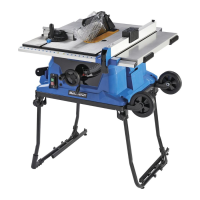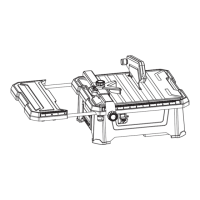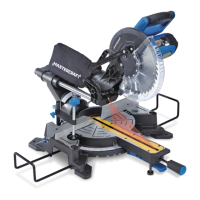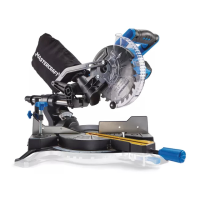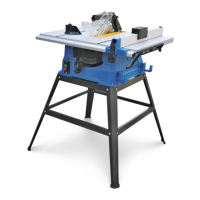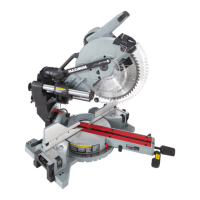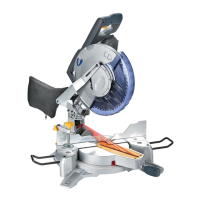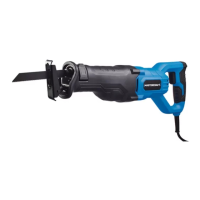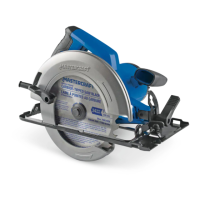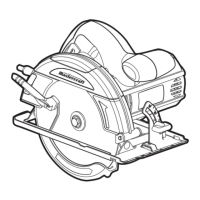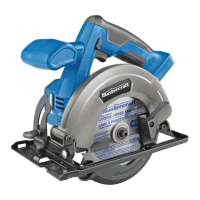26
2. Raise the blade so that it is about 1/8” (3.2 mm) higher than the top of the
workpiece.
3. Hold the workpiece flat on the table and against the fence. Keep the
workpiece about 1” (25.4 mm) away from the blade.
CAUTION! The workpiece must have
a straight edge against the fence,
and
must not be warped, twisted or bowed.
Keep both hands away from the blade
and away from the path of the blade.
4. Turn the saw on, and allow the
blade to come up to speed. Both
hands can be used in starting the
cut. When there is approximately
12” (305 mm) left to be ripped,
use only one hand, with your thumb pushing the material, your index and
second fingers holding the material down, and your other fingers hooked
over the fence. Always keep your thumb alongside your first two fingers
and near the fence.
5. Keeping the workpiece against the table and the fence, slowly feed the
workpiece all the way through the saw blade toward the rear. Continue
pushing the workpiece until it is clear of the guard and it falls off the rear
of the table. Do not overload the motor.
6. NEVER try to pull the workpiece back with the blade turning. Turn the
switch off, allow the blade to stop, raise the anti-kickback pawls on each
side of the spreader, if necessary, and slide the workpiece out.
7. When sawing a long piece of material or a panel, always use a work
support. A sawhorse, rollers or out-feed assembly provides adequate
support for this purpose. The work support must be at the same height as
the saw table.
BEVEL RIPPING (Refer to Fig. 24)
This operation is the same as ripping,
except that the bevel angle is set to an
angle other than 0°.
WARNING! Before connecting the
table saw to the power source or
oper-
ating the saw, always inspect the guard
and splitter for proper alignment and
clearance from the saw blade. Check
the alignment after each change of bevel
angle.
Fig. 23
Fig. 24

